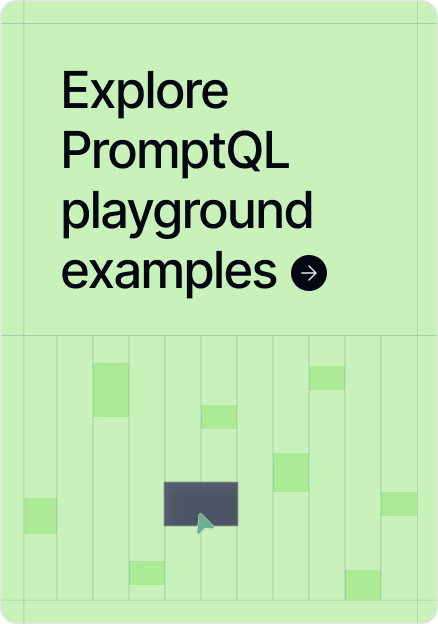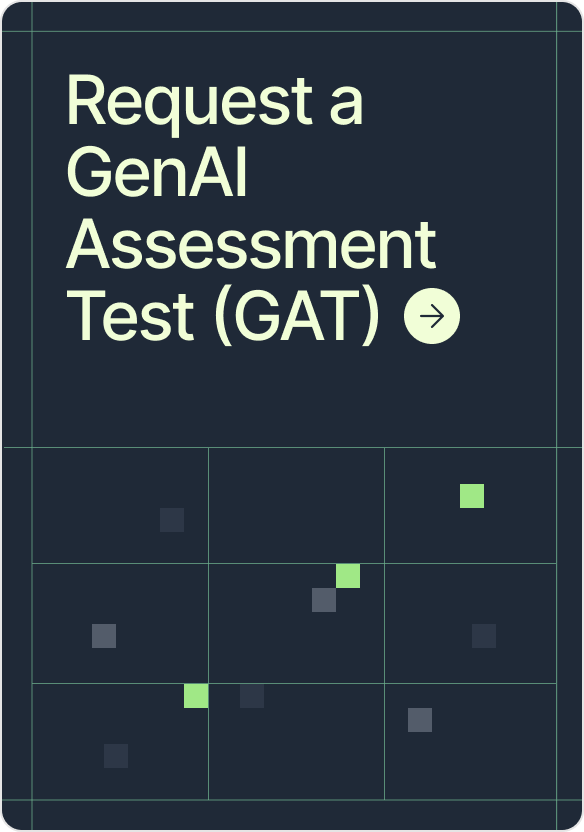Executive summary
The customer operates one of the most complex global supply chains in the world, and sells tens of thousands of SKUs across online, retail, and partner channels. Keeping that supply chain running smoothly – and optimizing the health of each sales channel – is mission-critical.
Despite investing in BI dashboards and homegrown ML models, teams still struggled to get timely, actionable insights. Simple operational questions such as these took days – if not weeks – to answer.
“why is a particular SKU out of stock in a specific region across all retailers?”
That’s where PromptQL came in.
By allowing business users and planners to ask operational questions in plain English - or their native language, and get trusted, explainable answers in minutes, PromptQL transformed how the customer identified, understood, and acted on supply chain issues that were impacting their channels.
The challenge
The customer’s business teams across supply chain operations needed faster, more reliable visibility into SKU performance and supply constraints across geographies and channels. Dashboards helped track trends, but not explain them. Root-cause analysis still depended on manual work by analysts…which can delay crucial, timely decisions that are needed to keep the complex global supply chain moving.
Data lived across multiple systems - Snowflake, MySQL, ML output tables - and making sense of it required tribal knowledge and time-consuming manual correlation.
Even basic questions triggered multi-day efforts to pull data, stitch tables, and interpret patterns.
For example, a planner might ask:
“Are any SKUs trending low because of recent return events at Acme?”
Answering that required:
- Correlating returns data with availability trends
- Cross-referencing shipment and exception logs
- Manually surfacing patterns from multiple systems
- Preparing a report with some level of confidence
But by the time the answer came back, the opportunity to act had passed.
In the customer’s own words:
“A lot of this is done manually. The data is there, but the analyst does the mental digging - looking at dashboards and doing a bunch of funneling.”
Why this was hard to solve
Business intelligence tools like Tableau were limited by design. They worked well when the data was clean and the schema was understood. But they couldn’t:
- Join across disparate systems on the fly
- Handle missing or mismatched fields gracefully
- Explain the business logic behind data issues
- Let non-technical users explore freely
- Deal with semantic reasoning
Meanwhile, custom ETL pipelines slowed everything down. Analysts became the bottleneck. And tribal knowledge - like how to interpret SKU health signals - stayed locked in people’s heads.
The solution: PromptQL
PromptQL created a natural interface decision intelligence across all of the customer’s fragmented data systems.
With semantic reasoning of the customer’s business terminology and processes at its core, PromptQL bridges the gap between technical complexity and business intuition. Planners and business leads can now ask questions such as:
“Which SKUs are trending red due to shipment issues from warehouse X?”
“Which SKUs show low availability in more than two reseller regions?”
PromptQL solves what existing tools and approaches can’t solve:
- It joins ML prediction outputs with sales, shipment, and exception data
- Maps issues to causes like delays, returns, or inventory mismatches
- Flags data gaps and mismatches, then rerouted queries as needed
- Provides answers with full traceability: every step, filter, and join was visible
The result? Clear, actionable answers - without needing to wait for analysts or BI teams.
As the customer noted:
“In PromptQL, I asked the same questions I asked my analysts. And PromptQL worked perfectly.”
Business Benefits
At a high-level, PromptQL helped the customer shift from reactive diagnosis to proactive responses. More specifically, using PromptQL, the customer is able to experience benefits such as:
Faster Decisions re: Channel Health
Questions that took days now take minutes. Decisions around SKU reallocation, channel optimization, and fulfillment planning are made in real time.
Always-On Supply Chain Monitoring
SKU exceptions and red flags are detected instantly. Planners can investigate issues before they escalate.
Natural Language Access to Insights
Everyone - from regional managers to supply chain leads - can explore operational data without knowing SQL or navigating dashboards.
Transparent, Explainable Logic
PromptQL shows every filter, join, and assumption in human-readable steps. This makes it easier to trust, verify, and iterate on answers.
From Tribal Knowledge to Shared Intelligence
Core logic - like which regions matter for which products - is encoded in PromptQL’s reusable plans, reducing reliance on individuals.
Conclusion
PromptQL didn’t just improve visibility - it is changing how the customer runs their supply chain operations.
Business users now ask complex, cross-system questions without needing an analyst. And they get answers they can trust - fast - without needing to build a new report for each new question.
Once again, in the customer’s own words:
“The goal is to answer questions without having to build a new application every single time.”
For a company where every supply chain misses means lost revenue, that kind of speed and clarity isn’t just a nice-to-have. It’s a competitive advantage – and a way to delight customers and earn their continued loyalty with every single transaction, whether they’re about to embark on a 16 hour flight, buy a gift for a loved one, or just upgrade their devices to take advantage of the latest innovation!
Discover how you can drive reliable AI decision intelligence and automation with PromptQL → request demo





